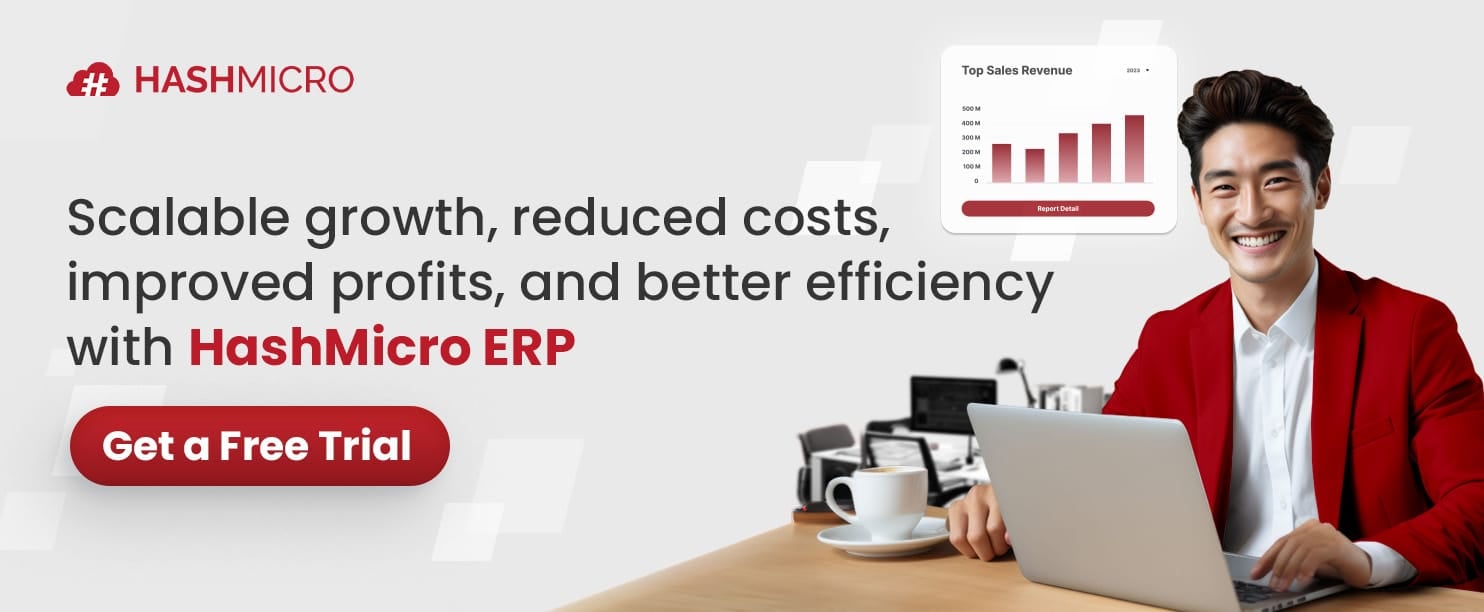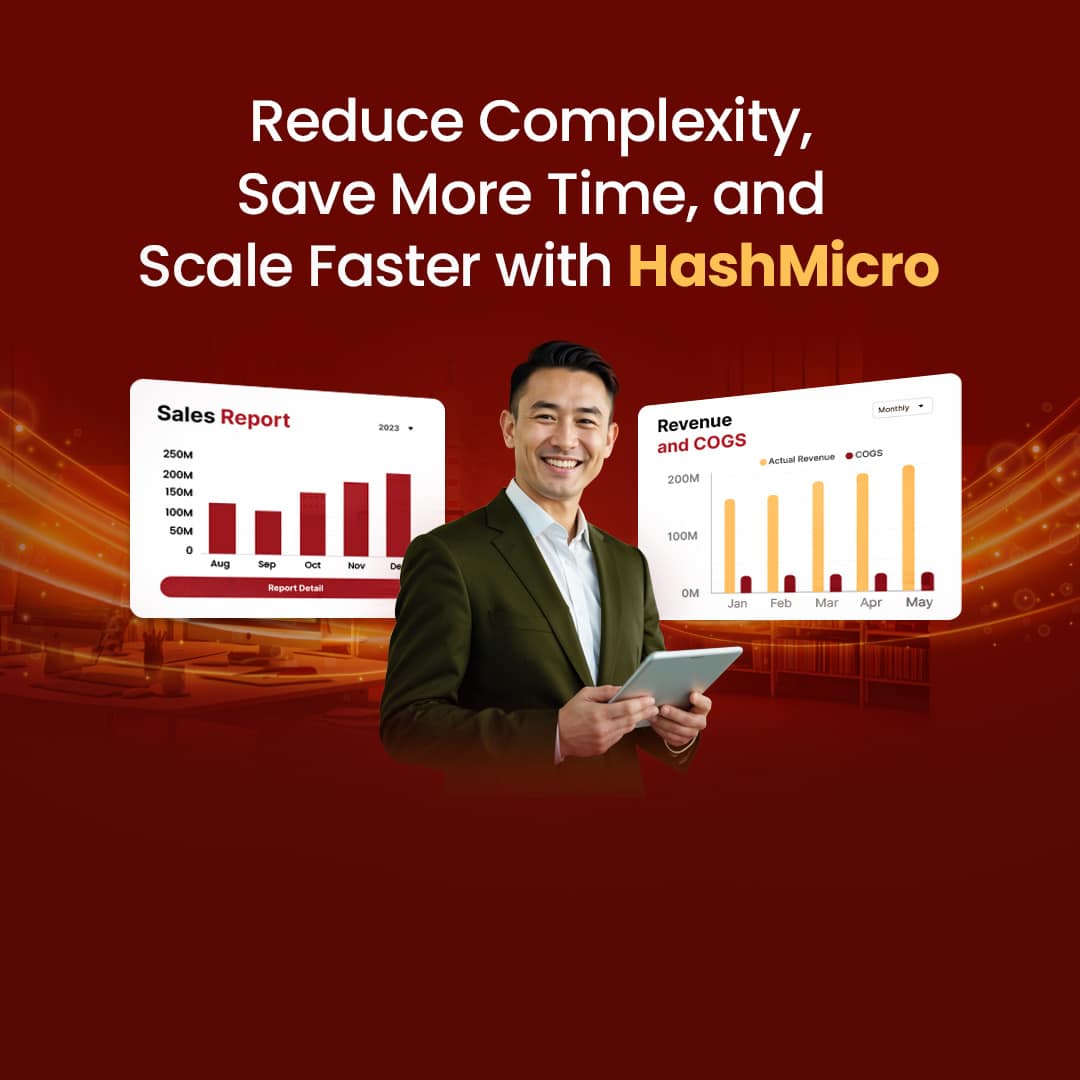Imagine your restaurant operations running without structured asset control. Equipment failures go unnoticed, stock discrepancies are frequent, and maintenance is reactive instead of planned. This inefficiency can disrupt your kitchen’s performance, increase operational costs, and negatively affect customer satisfaction.
In Malaysia, the food and beverage sector is growing rapidly, driven by a vibrant dining culture and increased digital adoption among F&B operators. According to Statista, the enterprise software market in Malaysia is projected to reach RM 5.5 billion in 2025, a clear indicator of the rising reliance on digital solutions for business optimization.
This article presents a curated list of Malaysia’s 12 best restaurant asset software solutions. By exploring these platforms, you will uncover how they can help track restaurant equipment and inventory, streamline preventive maintenance, and strengthen overall inventory and asset control for F&B businesses.
Key Takeaways
|
Table of Content
Content Lists
What is Restaurant Asset Software?
Restaurant asset software is a digital system that helps F&B businesses manage physical assets like kitchen equipment, furniture, and delivery tools. It enables equipment tracking, scheduled maintenance, and cost monitoring to ensure assets are always in good condition.
This software simplifies asset monitoring with barcode scanning and live data reporting features. It automates manual processes, minimizes human error, and saves time in managing restaurant inventories.
Restaurant asset software is helpful for restaurants with extensive inventories or multiple branches. It improves maintenance planning, reduces downtime, and supports budgeting for repairs and replacements.
The software often integrates with accounting and inventory systems, giving managers complete control over asset performance and costs. This results in more thoughtful decision-making and improved profitability for F&B operations.
Why Do Restaurants Need Asset Management Software?
For F&B businesses, enterprise asset management software maintains operational continuity and maximises equipment investments. With automation and system integration, restaurants can reduce downtime, cut maintenance costs, and use resources better. Below are key reasons why this software is essential:
1. Efficient asset scheduling and maintenance tracking
The software enables intelligent preventive maintenance scheduling to avoid unexpected equipment breakdowns. This ensures that critical appliances like ovens, chillers, or POS terminals remain fully functional. As a result, restaurants can deliver consistent quality and minimise service disruptions.
2. Accurate inventory and asset monitoring
Advanced tools like barcode scanning and GPS tracking enable accurate kitchen and dining equipment monitoring. Restaurant staff can quickly locate, verify, and track assets across branches. This improves stocktaking efficiency and reduces losses due to misplacement or theft.
3. Financial oversight with restaurant accounting software
The system can automatically record asset-related costs such as procurement, repairs, and depreciation when integrated with restaurant accounting software. This improves budget transparency and simplifies cost forecasting. Managers can better plan for future investments and avoid overspending.
4. Data-driven asset performance insights
Real-time dashboards provide visibility into usage trends, downtime history, and maintenance records. This enables proactive decision-making about asset repairs or replacements. Restaurants learn which equipment delivers the best ROI and which drains resources.
5. Stronger compliance and equipment accountability
The software helps maintain logs for audits, warranties, and safety inspections to meet F&B regulations. It also allows restaurants to assign accountability for assets and track their condition over time. This not only improves safety compliance but also enhances operational discipline.
12 Best Restaurant Asset Software for Your Business
Here are 12 top-rated restaurant asset software options for Malaysian food and beverage businesses that we’ve carefully selected based on their functionality, usability, and ability to support asset and inventory control across outlets.
- HashMicro Restaurant Asset Software: Cloud-based all-in-one software with AI-powered automation, preventive maintenance scheduling, and integration with restaurant accounting software to support asset lifecycle management.
- UpKeep: Simple maintenance software used to record the maintenance schedule and condition of restaurant equipment. Suitable for basic asset tracking.
- Sage Restaurant Software: Customizable accounting and HR solution for small to medium-sized restaurants. Used for basic financial and inventory management.
- SAP: Large-scale platform with asset monitoring and maintenance schedule features. Generally used by large restaurant businesses with end-to-end system needs.
- Asset Panda: Cloud-based asset tracking software with barcodes and reporting. Suitable for restaurants that want organised asset documentation.
- UpMenu: Focuses on menu management and online ordering, but also supports light operational tracking. Commonly used in small restaurants and cafes.
- TouchBistro: Restaurant management software for transactions and kitchen. It can be used to keep track of equipment, but its main focus is the POS system.
- Clover: This is a Simple POS with daily inventory and transaction tracking features. It does not support detailed asset tracking.
- iFoodDS: Used for food safety and product quality tracking. Limited asset features and more about compliance documentation.
- Lightspeed System: This system provides POS and staff management features and can help record operational activities and tools in the kitchen.
- Restaurant365: Combines accounting and inventory in one system. Used for vendor, purchasing, and basic equipment tracking.
Selecting the right restaurant asset management software is essential for streamlining operations, improving equipment reliability, and maintaining cost control. This guide highlights 12 trusted platforms to help you track, maintain, and analyze your assets more effectively across one or multiple restaurant locations.
1. HashMicro Restaurant Asset Management Software
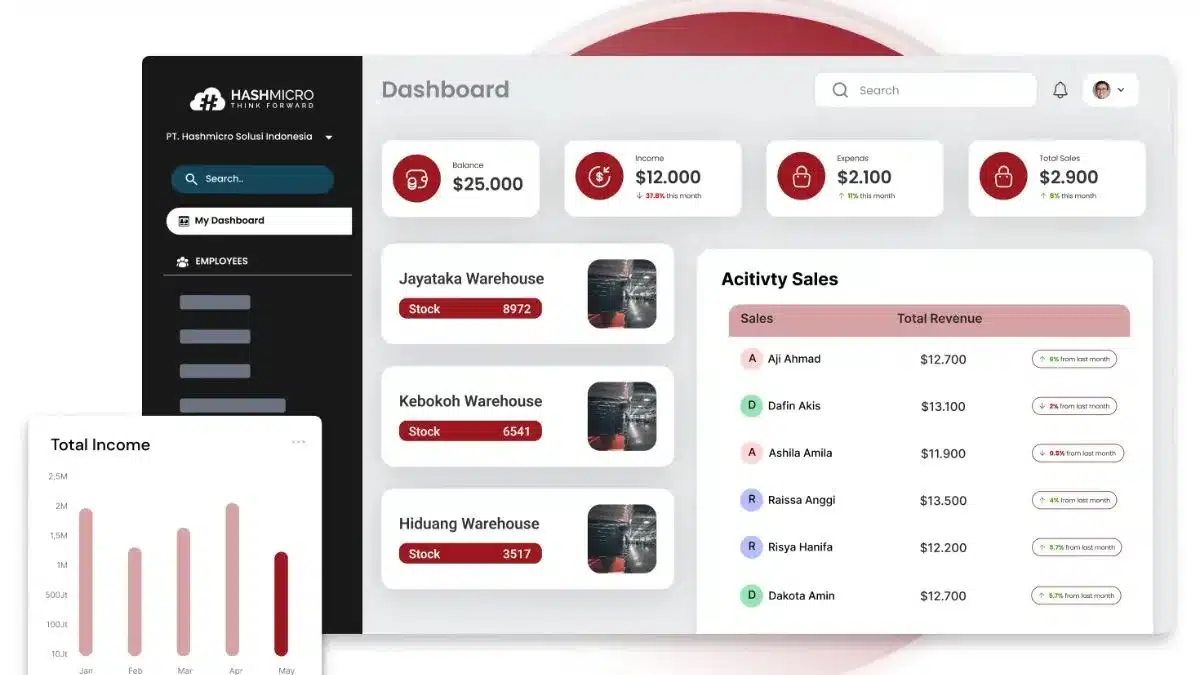
HashMicro Restaurant Asset Software delivers a powerful all-in-one platform to streamline asset operations across restaurants and F&B businesses. As a cloud-based system, it automates asset tracking, maintenance scheduling, and budgeting while integrating seamlessly with restaurant accounting software for accurate cost management and forecasting.
Built with flexibility and compliance in mind, this enterprise asset management software enables restaurant operators to manage multiple outlets, track kitchen equipment in real time, and avoid costly downtimes. It’s an ideal solution for businesses aiming to improve operational efficiency, reduce human error, and make informed asset decisions.
Let’s take a closer look at the complete features of HashMicro’s Restaurant Asset Software:
- Preventive Maintenance Scheduling: Schedule recurring maintenance to prevent sudden equipment failure. This feature helps extend the lifespan of restaurant kitchen appliances and reduces operational downtime during busy service hours.
- Asset Stocktake with Barcode: Use barcode scanning to quickly and accurately track restaurant equipment and inventory. This feature supports faster audits, reduces human error, and improves inventory and asset control for F&B businesses.
- Asset Maintenance Budget: Allocate and monitor budgets for maintaining essential kitchen and dining assets. Control repair costs while ensuring uninterrupted operations during peak service times.
- QR Code Scanning for Facility Requests: Allow your restaurant staff to report broken equipment or request maintenance instantly by scanning QR codes. This ensures quick action, reducing service delays and improving customer satisfaction.
- Fuel Log & Odometer Tracking: Track fuel usage and mileage of delivery fleets. This helps restaurants cut fuel waste, extend vehicle life, and analyze logistics efficiency for food delivery operations.
- Parent & Child Asset Management: Organise restaurant assets in a hierarchical structure (e.g., kitchen ovens and their components). This makes tracking maintenance history and managing replacements for interconnected equipment easier.
- Asset Comprehensive Cost Reporting: Gain visibility into the full lifecycle cost of each asset—from purchase to disposal. These insights support better restaurant accounting software integration and long-term asset planning.
| Pros | Cons |
|
|
If you are interested in learning more about how HashMicro Restaurant Asset Software can optimise your restaurant operations, click the banner below to view the pricing scheme.
2. UpKeep
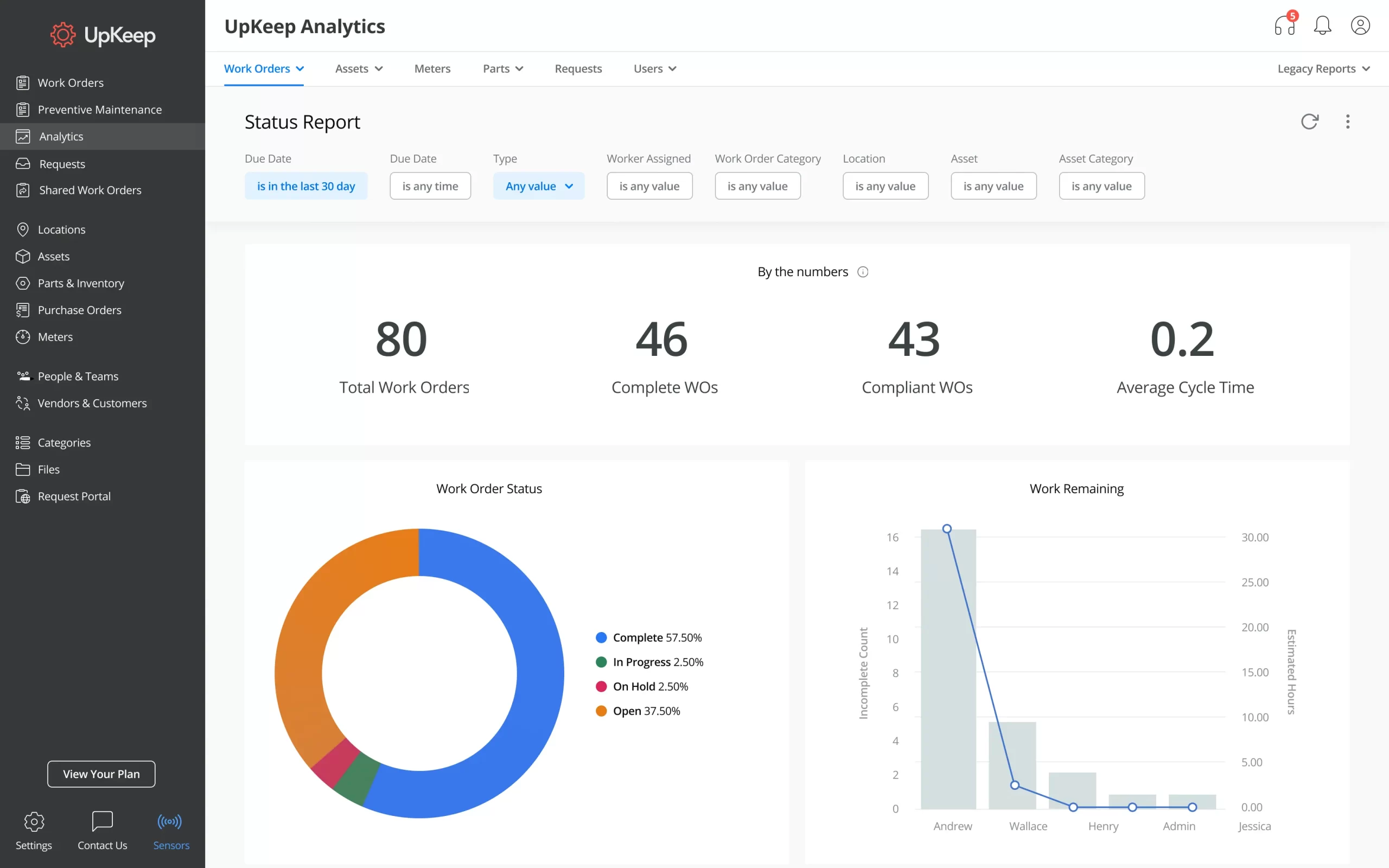
UpKeep is a maintenance and asset management software used in restaurant operations to help track equipment, schedule maintenance, and monitor asset conditions. It is generally aimed at helping businesses stay organised and reduce unexpected equipment issues.
The platform is commonly used by small to medium-sized food businesses that need a basic system to manage repairs, track maintenance schedules, and log service records for kitchen equipment and other assets.
Key Features:
- Work order management
- Preventive maintenance scheduling
- Asset tracking and reporting
| Pros | Cons |
|
|
3. Sage Restaurant Asset Software
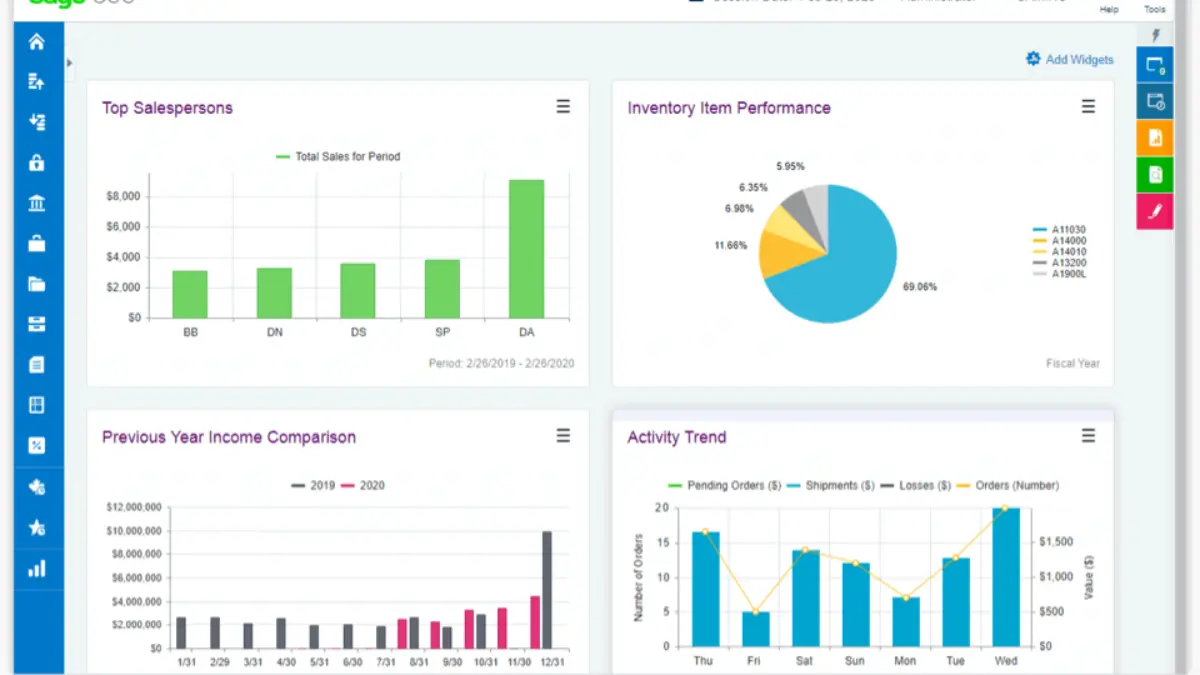
Sage offers accounting and business management software that can be adapted for use in restaurant operations. It provides tools for managing finances, payroll, and human resources, which can assist restaurants in organising their administrative tasks.
This software is suitable for restaurants that require a system to handle financial reporting, employee management, and basic inventory tracking. It is often used by businesses looking to centralise their back-office operations.
Key Features:
- Financial reporting and budgeting tools
- Payroll and human resources management
- Basic inventory tracking capabilities
| Pros | Cons |
|
|
4. SAP
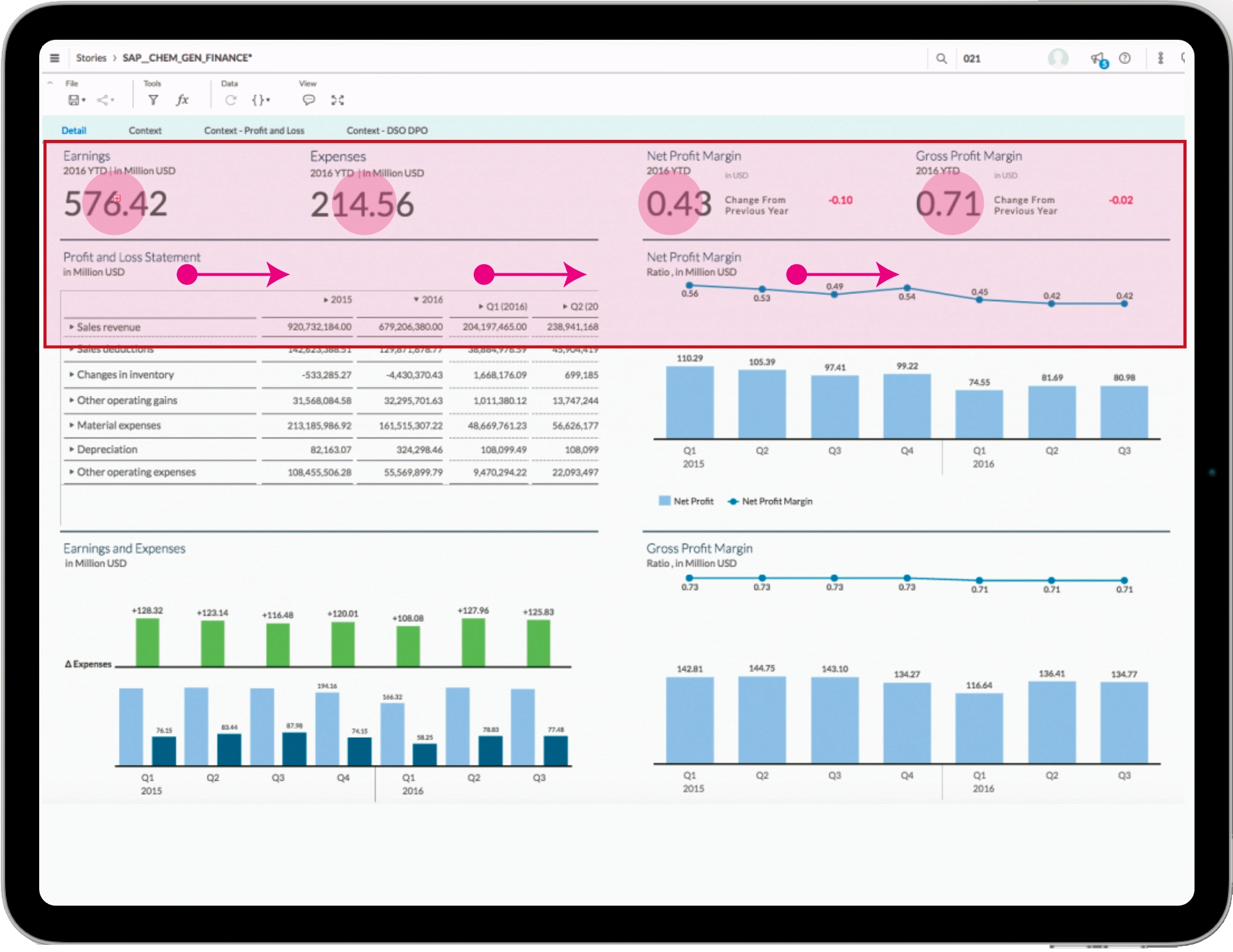
SAP provides enterprise asset management solutions that can be adapted for use in restaurant operations. These tools assist in tracking and maintaining kitchen equipment, monitoring asset performance, and scheduling maintenance tasks to help ensure operational efficiency.
The system is generally suited for medium to large-scale food businesses that require comprehensive asset oversight and integration with other business processes.
Key Features:
- Asset tracking and lifecycle management
- Maintenance scheduling and execution
- Performance monitoring and reporting
| Pros | Cons |
|
|
5. Asset Panda
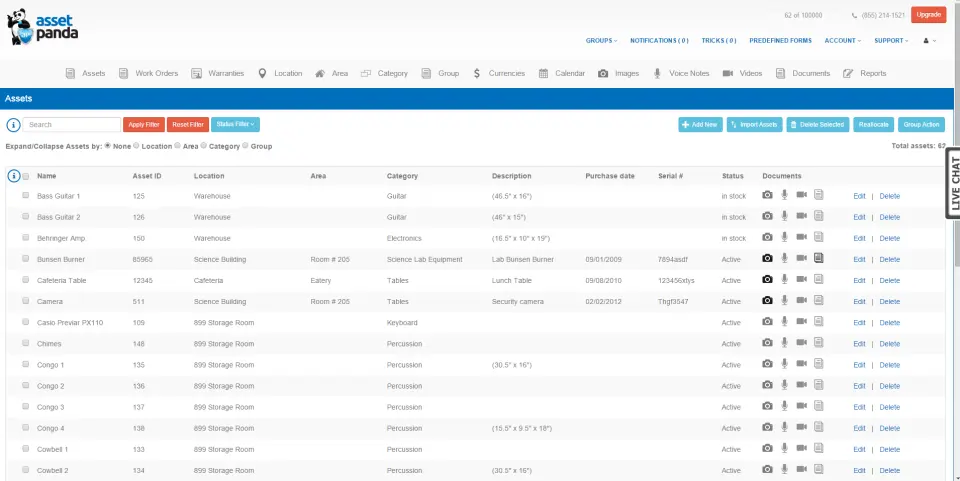
Asset Panda is cloud-based asset management software that restaurants can use to monitor and manage their equipment and facilities. It offers asset tracking, maintenance scheduling, and reporting tools to assist in organising and maintaining restaurant assets.
The system suits restaurants seeking a centralised platform to oversee their assets, maintenance activities, and documentation.
Key Features:
- Asset tracking with barcode scanning
- Maintenance scheduling and tracking
- Customizable reporting and analytics
| Pros | Cons |
|
|
6. UpMenu Restaurant Asset Software
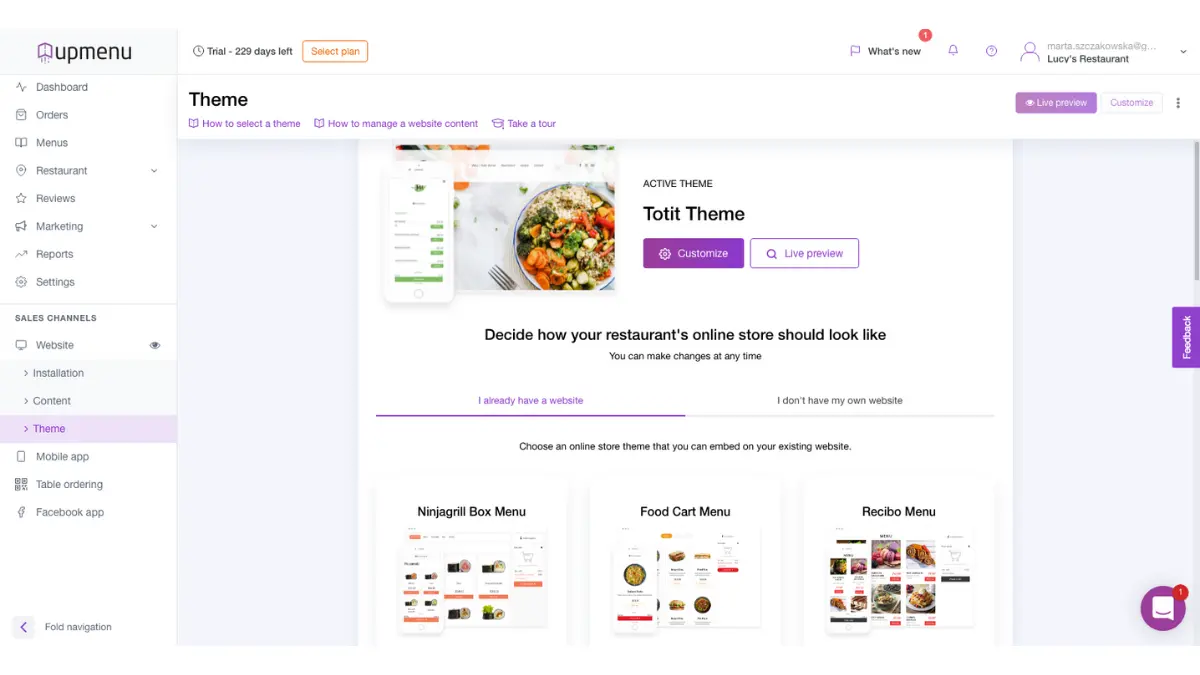
UpMenu is a restaurant management software that assists in organising operations and assets in food and beverage businesses such as restaurants and cafes. The system offers features related to online ordering, menu management, and customer engagement.
Its tools are generally suited for small to medium-sized food businesses seeking a straightforward way to manage essential operations in one place.
Key Features:
- Online ordering system
- Menu management
- Customer engagement tools
| Pros | Cons |
|
|
7. TouchBistro Restaurant Asset Software
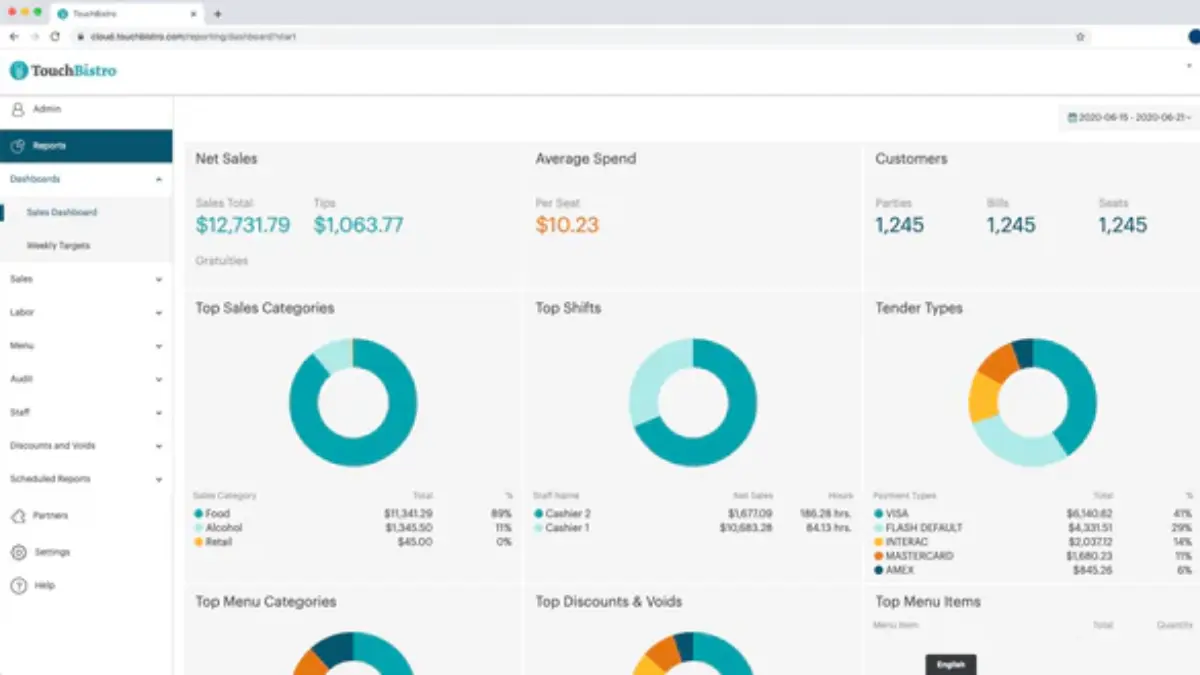
TouchBistro is a restaurant management software used to help organize operations and assets in food and beverage businesses such as restaurants and cafes. The system offers basic transactions, kitchen, and customer management features.
Its tools are generally suited for small to medium-sized food businesses seeking a simple way to manage essential operations in one place.
Key Features:
- Point of Sale (POS) system
- Digital kitchen display
- Loyalty program management
| Pros | Cons |
|
|
8. Clover Restaurant Asset Software
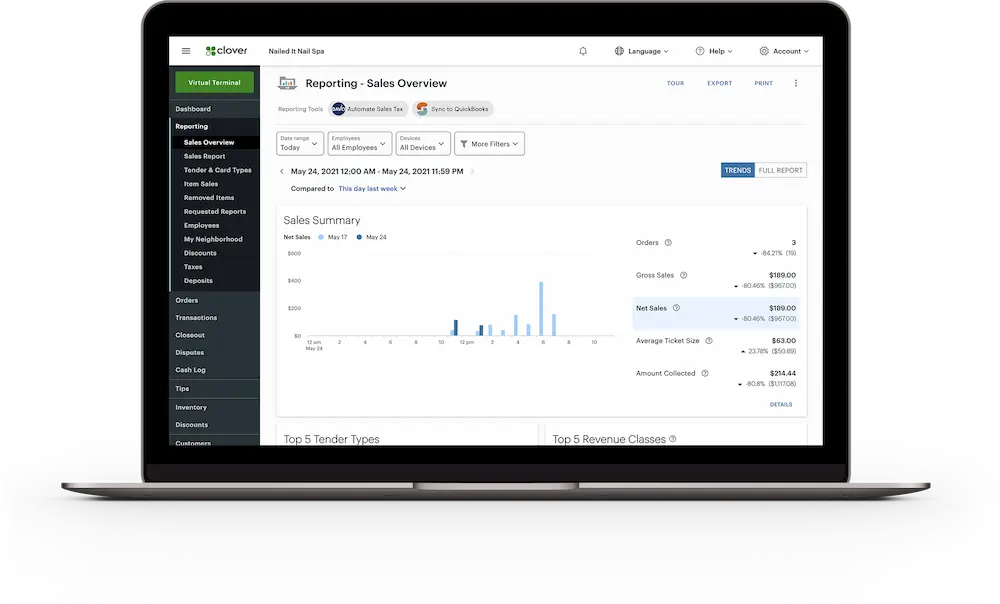
Clover is a restaurant management platform designed to assist food and beverage businesses with handling transactions and operational tasks. It provides essential features such as point of sale, payment processing, and customer order management in one system.
The software is commonly used by small to mid-sized restaurants and cafés that require simple tools to support daily operations. Clover’s interface is relatively straightforward, making it accessible for staff with minimal technical experience.
Key Features:
- Integrated Point of Sale (POS) system
- Inventory tracking tools
- Basic reporting and analytics
| Pros | Cons |
|
|
9. iFoodDS Restaurant Asset Software
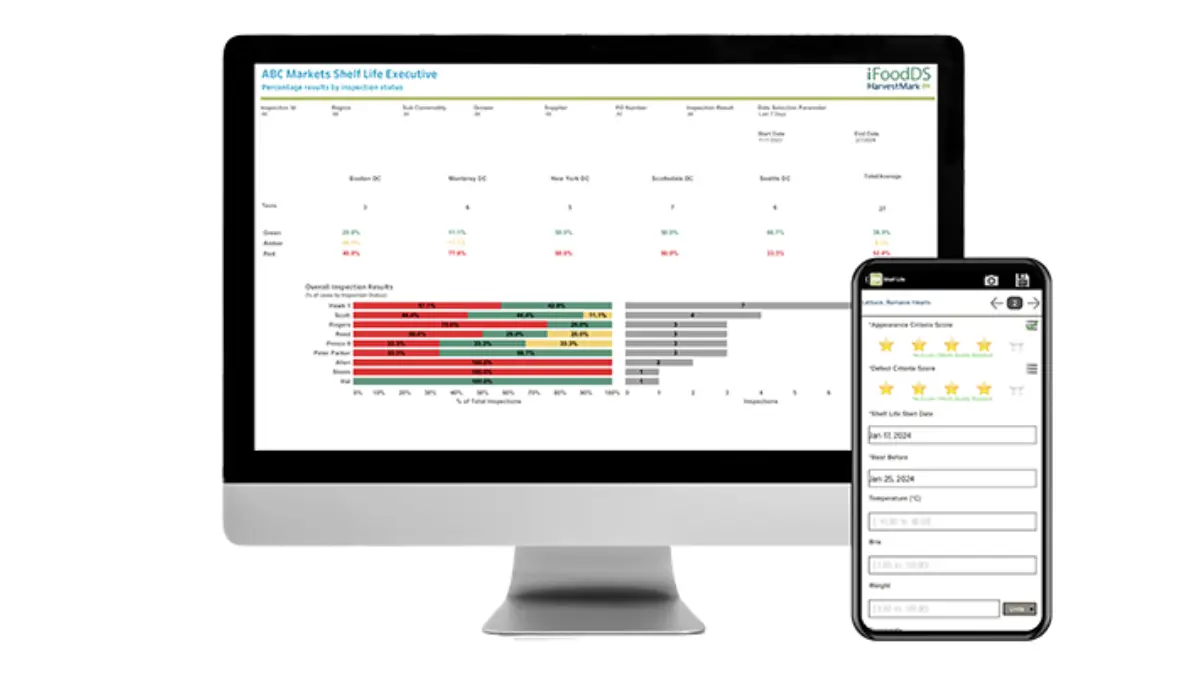
iFoodDS is a restaurant and food safety management software that helps food service businesses track and manage product quality and inventory. It is designed to assist with traceability, food safety documentation, and kitchen or supply chain monitoring.
This software is generally used by restaurants or food-related businesses that must comply with food safety standards and ensure consistent product handling. While it offers helpful tools for visibility and reporting, it focuses more on safety and traceability than full asset management.
Key Features:
- Food safety tracking and documentation
- Traceability tools for inventory
- Quality monitoring system
| Pros | Cons |
|
|
10. Lightspeed System

Lightspeed Restaurant is a cloud-based restaurant management software designed to help food and beverage businesses manage their daily operations. The system provides features such as a Point of Sale (POS) system, inventory management, and business performance reporting.
The software is suitable for small to medium-sized restaurants looking for an integrated solution to manage orders, stock, and financial reports in one platform.
Key Features:
- POS system for order and payment processing
- Inventory management to track stock of groceries and supplies
- Business performance reporting and data analysis
| Pros | Cons |
|
|
11. Restaurant365
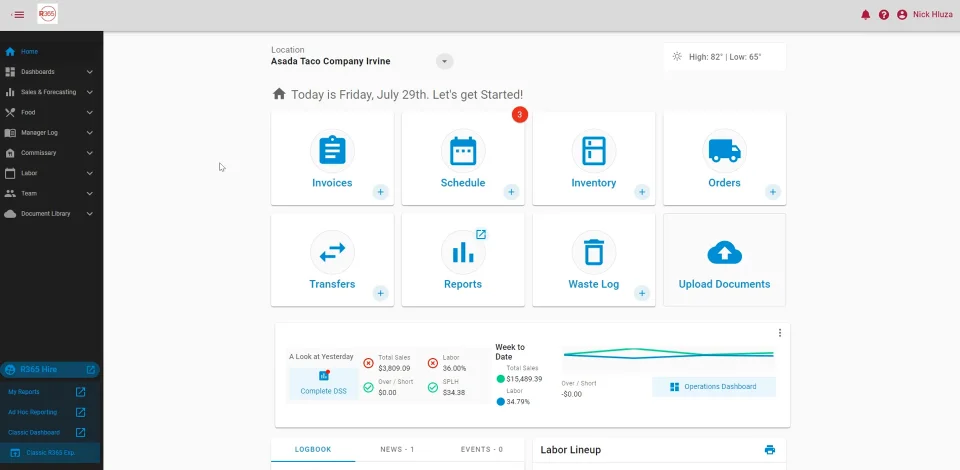
Restaurant365 is a restaurant software platform that helps manage accounting, operations, and inventory in food service businesses. It mainly supports restaurant workflows such as budgeting, vendor management, and tracking food and equipment assets.
This software is generally suitable for restaurants that require combined financial and operational oversight. While it offers some asset-related features, its primary focus is on financial reporting and inventory control.
Key Features:
- Integrated accounting tools
- Inventory and vendor tracking
- Basic asset and equipment management
| Pros | Cons |
|
|
12. AssetCloud
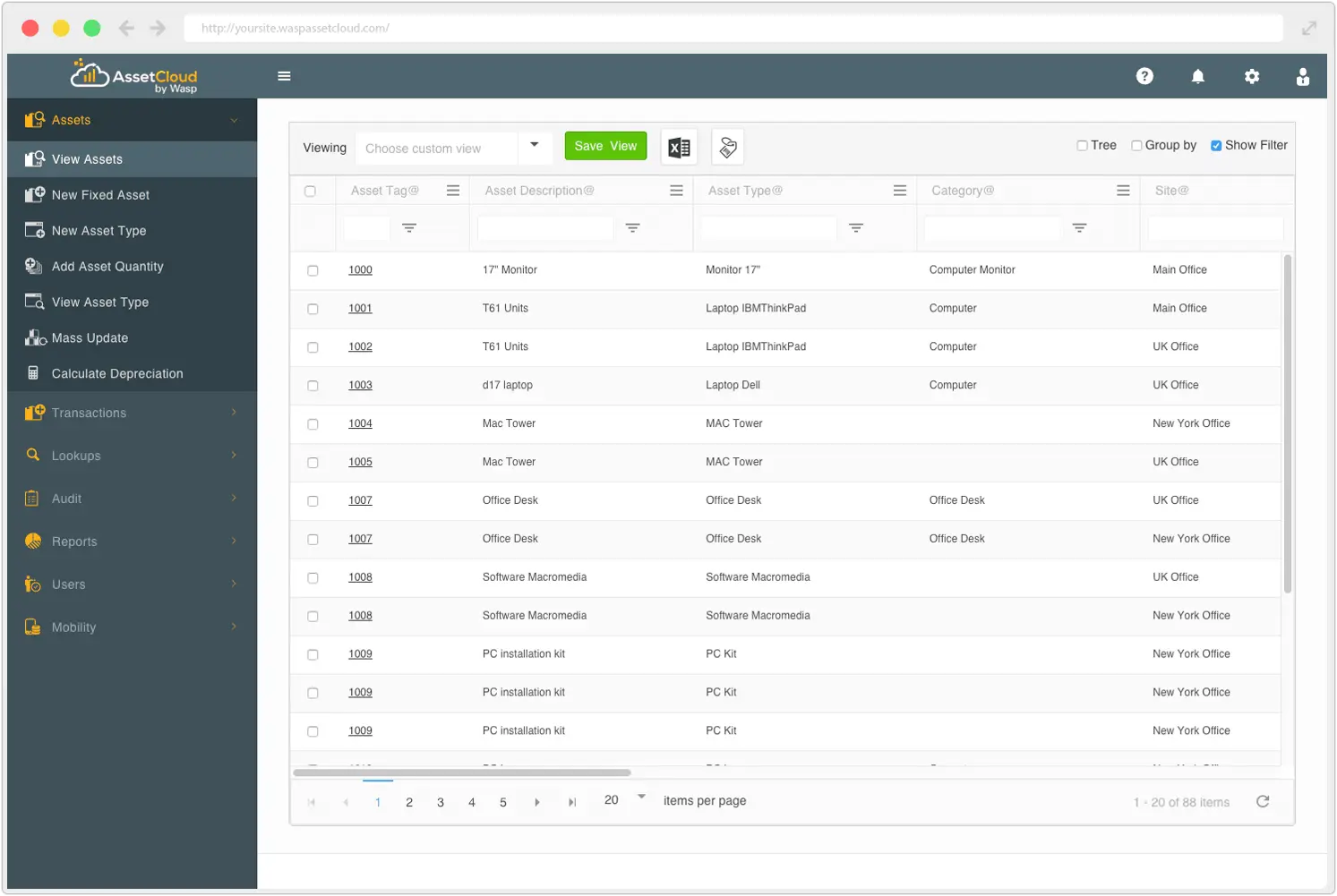
AssetCloud is asset-tracking software for restaurants that monitors equipment, supplies, and inventory across multiple locations. It provides tools for barcode scanning, audit tracking, and basic reporting to support asset visibility.
The platform is generally helpful for food businesses that want a structured way to keep track of restaurant equipment and reduce asset loss. It focuses more on tracking than full operational control.
Key Features:
- Barcode and RFID asset tagging
- Check-in/check-out tracking
- Asset lifecycle reporting
| Pros | Cons |
|
|
How to Choose the Right Restaurant Asset Software

Selecting the right restaurant asset management software is essential for maintaining operational continuity, controlling costs, and optimizing kitchen and facility assets. Whether you operate a single outlet or a multi-branch F&B brand, here are the key factors to consider before choosing an enterprise asset management software:
1. Define your asset management challenges
Identify your needs, such as equipment maintenance scheduling, inventory audits, or multi-location asset tracking. This will help you select asset-tracking software for restaurants that aligns with your daily operations and long-term goals.
2. Look for real-time tracking and automated maintenance
Choose software that supports GPS tracking and preventive maintenance scheduling. These features reduce unplanned downtime, improve kitchen performance, and extend the lifespan of high-value assets like ovens, freezers, or POS terminals.
3. Ensure integration and scalability
The system should integrate with your restaurant accounting software and inventory tools to provide unified reporting. Make sure the software can grow with your business—supporting new outlets, staff, and additional hardware as needed.
4. Consider ease of use and support
Opt for a platform with an intuitive interface suitable for both back-office and floor staff. Look for responsive vendor support and clear onboarding resources to help your team quickly adapt and maximise software functionality.
Conclusion
Choosing the right restaurant asset software is key for F&B businesses aiming to maintain operational efficiency, reduce asset loss, and extend the lifespan of essential equipment. With numerous platforms available, it’s important to evaluate your restaurant’s specific needs and select a solution that offers visibility, control, and ease of use.
For restaurants looking for a complete system, HashMicro’s restaurant asset software supports preventive maintenance, inventory tracking, budgeting, and real-time monitoring. Its cloud-based system and AI-powered automation help optimise asset operations while aligning with your restaurant accounting software and workflow.
Ready to optimise how you track and manage restaurant equipment and inventory? Schedule a free demo today and see how HashMicro can help you simplify daily operations, improve accountability, and drive efficiency across your restaurant business.
Question About Restaurant Asset Software
-
What are the assets in a restaurant?
A restaurant’s assets include tangible and intangible resources used for daily operations. Tangible assets typically consist of kitchen equipment (e.g., ovens, freezers), furniture, POS systems, delivery vehicles, and inventory. Intangible assets may include software licenses, brand value, and operational procedures.
-
What is the best restaurant software?
One of the best restaurant software solutions is HashMicro. It offers an all-in-one restaurant asset management system that supports preventive maintenance and seamless integration with accounting and inventory systems. With AI-powered automation, HashMicro helps restaurants optimize efficiency and reduce asset downtime.
-
Do restaurants use ERP?
Yes, many restaurants—especially multi-branch or fast-growing operations—use ERP (Enterprise Resource Planning) systems. ERP software integrates different business functions, such as inventory, accounting, HR, and asset management, into one centralized platform. This allows restaurants to operate more efficiently, make data-driven decisions, and maintain compliance.
-
What software is used for asset management?
Asset management software helps businesses monitor, track, and maintain their physical assets. Common restaurant platforms include HashMicro, UpKeep, Asset Panda, and SAP. These systems vary in complexity and feature sets, from simple tracking tools to fully integrated cloud solutions with reporting, alerts, and maintenance scheduling.






